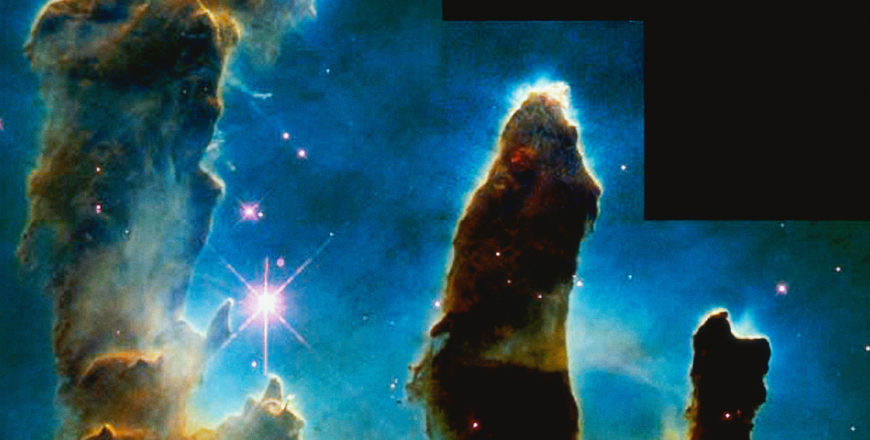Astronomy

Supermarket Science Materials are organized into thematically linked sets with experiments and activities as well as background information that makes them easier to do. There are also a bunch of simple, fun art and writing projects. All of the activities can be done alone or in conjunction with other project sets. Choose activities that are developmentally appropriate for your children.
All Supermarket Science Materials are primarily geared toward students in elementary and secondary schools, as well as their parents and teachers, but can be expanded to higher grades. The activities are designed to advance the understanding of concepts of biology, ecology, geology, and sociology based on local resources like a backyard or a local grocery store. All of the materials in this set and others link the Core Curriculum Standards. Use these Standards to focus the activities to a particular grade level.
There are also LEARN, SHOW, USE, DO, and TEACH pages. LEARN pages are designed to be printed out and given to the kids. They contain explanations, stories, or diagrams. SHOW pages usually present interesting photographs or illustrations that demonstrate specific concepts. USE pages are created as supplemental materials for the activities and experiments. Animal Cards and Map Cards are examples of USE pages. And finally, the DO pages contain the actual activities and experiments—please print as many copies as you need and give them to your children. Please use the back of these pages as scrap and add additional pages as needed.
On some pages, there are icons of animals. For example, an activity about elephants might have an elephant icon next to it. These icons can be used as keys to link information between all of the Supermarket Science Materials.
Most DO pages have a What You Need list of items in the margin under the title of the activity. This is a quick reminder for what children should have while doing the activity. It might look something like a list on the right: Animal Stamps pages, Animal Cards pages, research books, pencil, scissors, glue, etc.
Some of the activities use of cards from the Supermarket Science Cards or Stamps USE pages. Creating taxonomies is part of the scientific process. Card games and activities allow kids an opportunity to practice this skill.
While the Astronomy activities can be done all on their own, consider doing them together with Optics, Electromagnetism, and Impacts—they sort of all go together. But frankly so do the activities about animals—we live in one universe and things tie together. One of the greatest joys in learning is discovering these connections.

Summary and Introduction to Astronomy
The Solar System is our home. It consists of one star, nine planets (this includes Pluto, the dwarf planet), and numerous moons, asteroids, meteors, comets, and Kuiper Belt objects. While there are many differences among all these objects, there are similarities, too. This section is a brief introduction to our planetary system and the objects within.
Astronomy is the science of the stars. Since the cost of sending probes out to distant planets and neighboring stars is very prohibitive, we have to rely on information arriving to us from those far off locations in the electromagnetic spectrum. It’s important to understand the history of Solar System exploration and the tools used to study it. Discoveries never stand alone, scientific progress always builds on what came before.
Language Arts and Science
The activities at the end of this module are designed to extend and apply kids’ ideas about astronomy into a language arts curriculum. One of the Supermarket Science Curriculum main educational principles is that knowledge should be both deep and wide—students should have an opportunity to explore the topics they are studying in a wide variety of contexts and to pursue their favorite subjects with depth that usually reserved just for experts. The multiple points of entry into a subject area are of paramount importance to our goal of bringing more science and mathematics into elementary and middle school curriculum.
Advanced Math with Scientific Notation
There’s some handy stuff you can do with scientific notation. Multiplying big numbers together is a breeze. It’s an amazing tool. So let’s start with a definition. The number 2.34 x 106 has two parts. The first part is called the mantissa—that’s 2.34 in this example. The second part is called the exponent—that’s 6 in this example.
So let’s say you wanted to multiply 20,000 x 3,000,000. That’s 2 x 104 times 3 x 106. The cool thing is that you multiply the mantissa but you add the exponents. So 2×3 is 6, and 4 + 6 is 10. The answer is 6 x 1010.
It’s the same when you divide—except that you divide the mantissa and subtract the exponents. So let’s say you wanted to divide 3,000,000 by 20,000. That’s times 3 x 106 divided by 2 x 104. 3 divided by 2 is 1.5, and 6-4 is 2. The answer is 1.5 x 102. That’s 150. Easy!
Measurement
This section introduces the metric system, measurement, approximation. The goal is to give kids hands-on experience in using mathematics for a scientific purpose.
This section explores the use of mathematics and measurement in the real world of every day science. Depending on the topics your children are currently studying in math and science, you can choose to explore the topics presented here in more depth. For example, kids would benefit from comparing each other’s data and creating graphs documenting those differences. Alternatively, students can repeat the experiments multiple times, gathering observational information for each try and graphing the results.
The history of development of measuring systems is a very rich topic—ideal for putting regional politics and history into a mathematical perspective. In particular, you might want to research the movement toward standardization of nuts and bolts around the turn of the last century in Philadelphia. Students can explore economic pressures versus the convenience of a single system from a very unique perspective. The man largely responsible for the standardization movement was William Sellers. On April 21, 1864, he delivered a speech “On a Uniform System of Screw Threads,” urging the adaptation of standards. Today, not only do we have (and need) the National Institute of Standards and Technology, but we also have about 800,000 industry standards.
This video shows the relative sizes of the planets and how far they really are from the Sun.
Why do the waters on the beach go up and down during the day? What's responsible for tides?
A short video simulation of the moon's orbit around the Earth.
Many of the stars we see in the night sky are actually brighter than the Sun. But because they are so far away, they look dim to us. One way to classify stars is based on how bright they appear to us here on Earth. Stars can be brighter because they are bigger than other stars. They can also be brighter because they are closer to us than other stars.
Planets in our Universe can get extremely large, but stars get even bigger. In this video explores the sizes of moons, planets, stars, and even beyond, including black holes and even galaxies.
There are two competing systems of measurement in the United States today: the Metric System and the Standard System. In the United States, we mostly use the Standard System of measurement which is composed of inches, feet, yards, and miles. Scientists prefer to use the Metric System which is composed of millimeters, centimeters, meters, and kilometers. They also use Scientific Notation to make it easier to write large numbers.
This is the original 1977 movie made by Charles and Roy Eames: https://www.eamesoffice.com/the-work/powers-of-ten/
One of the Supermarket Science Curriculum main educational principles is that knowledge should be both deep and wide—kids should have an opportunity to explore the topics they are studying in a wide variety of contexts and to pursue their favorite subjects with depth that usually reserved just for experts. The multiple points of entry into a subject area are of paramount importance to our goal of bringing more science and mathematics into elementary and middle school curriculum. So these activities bring together art and writing and science.
